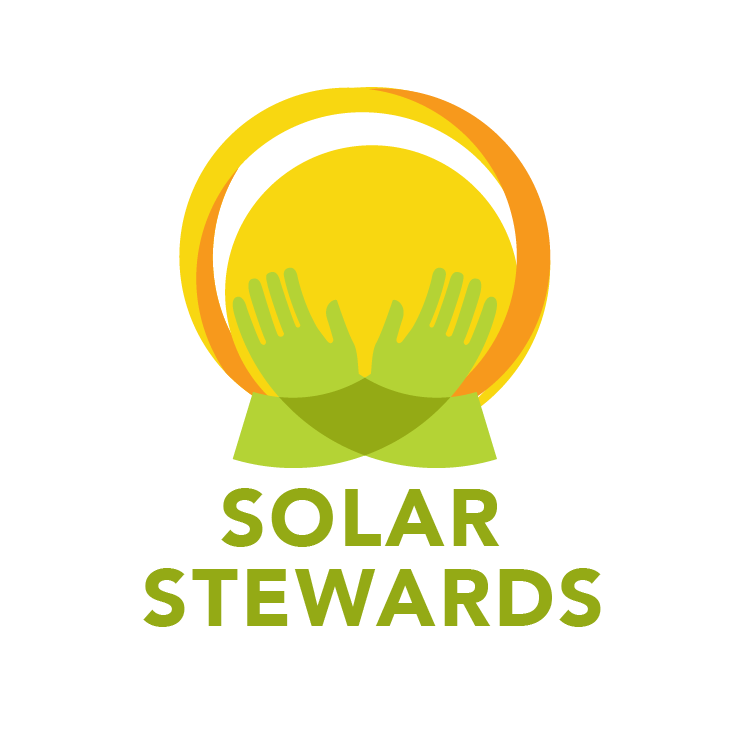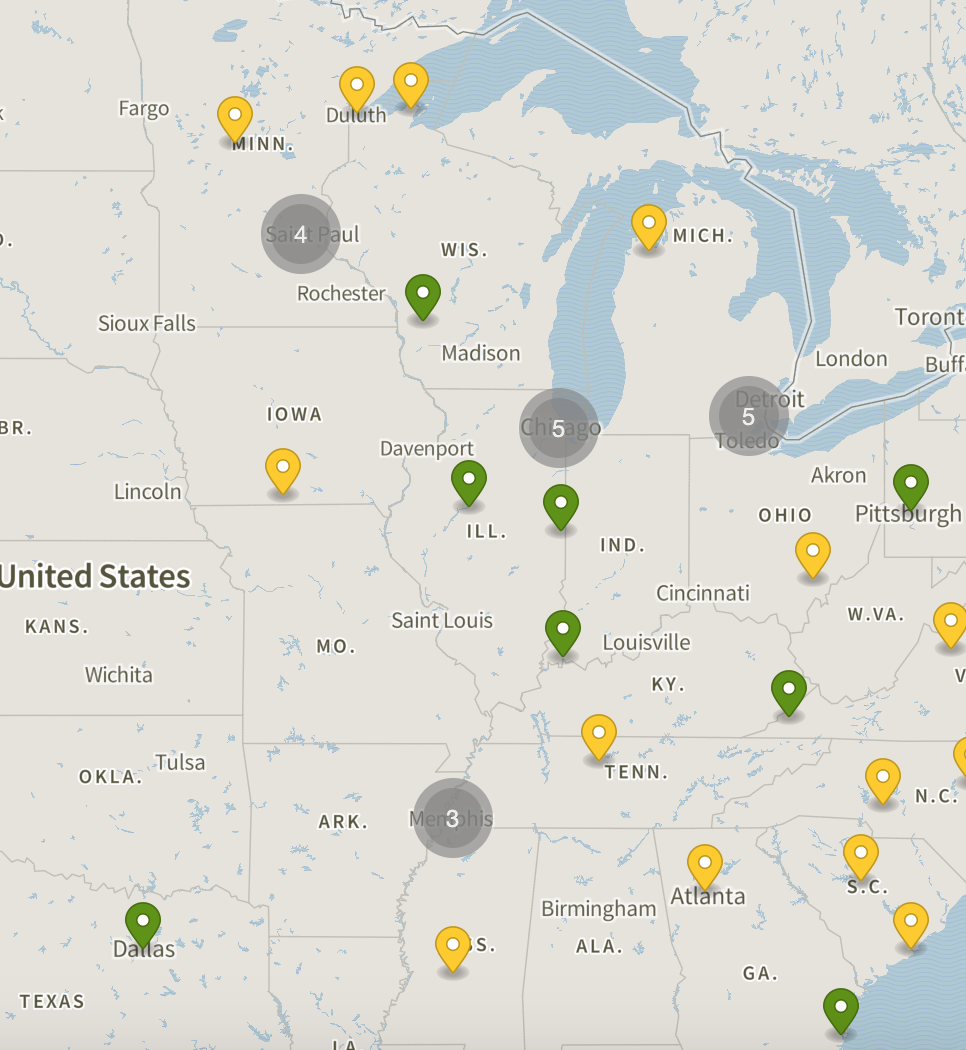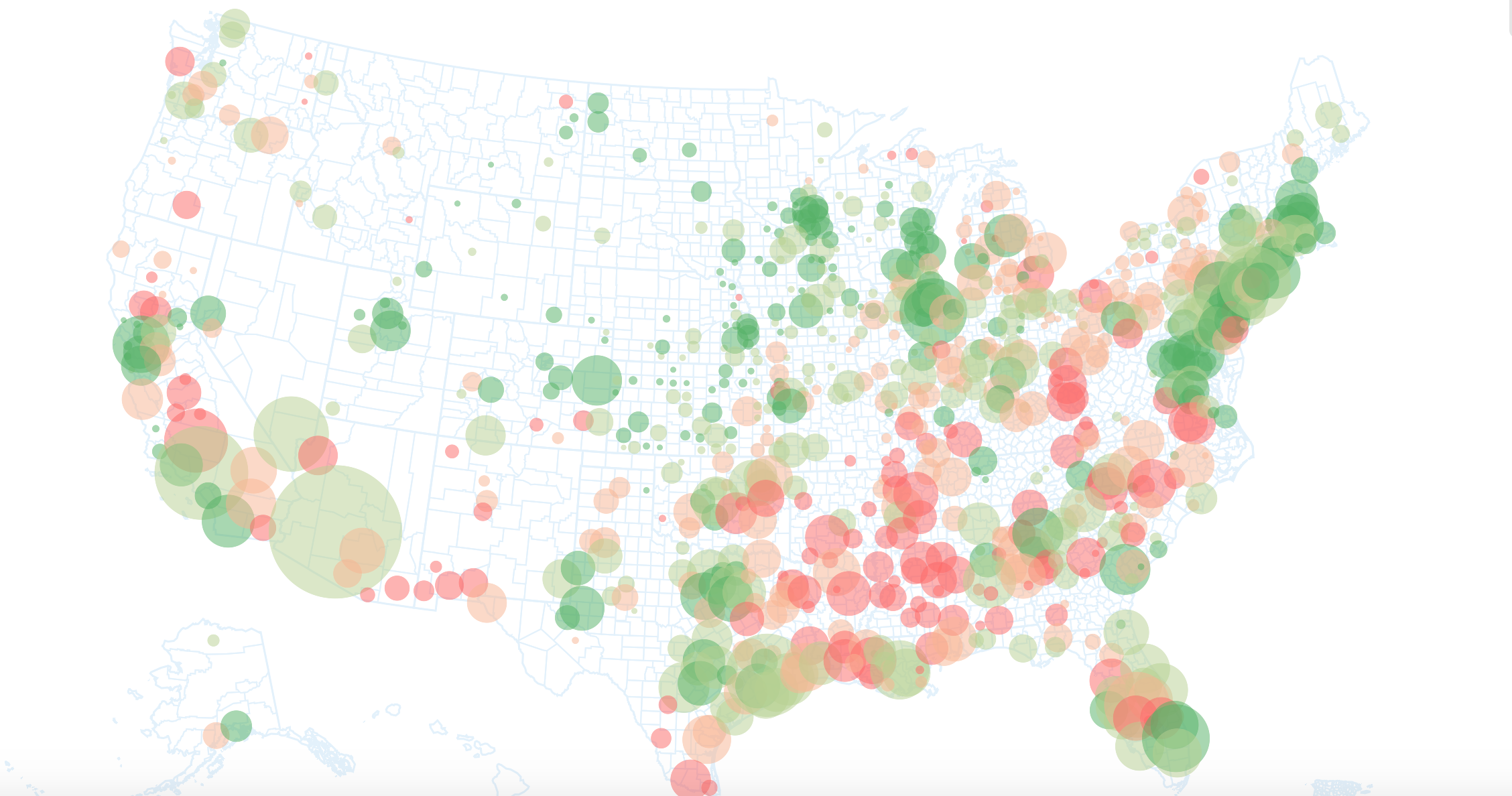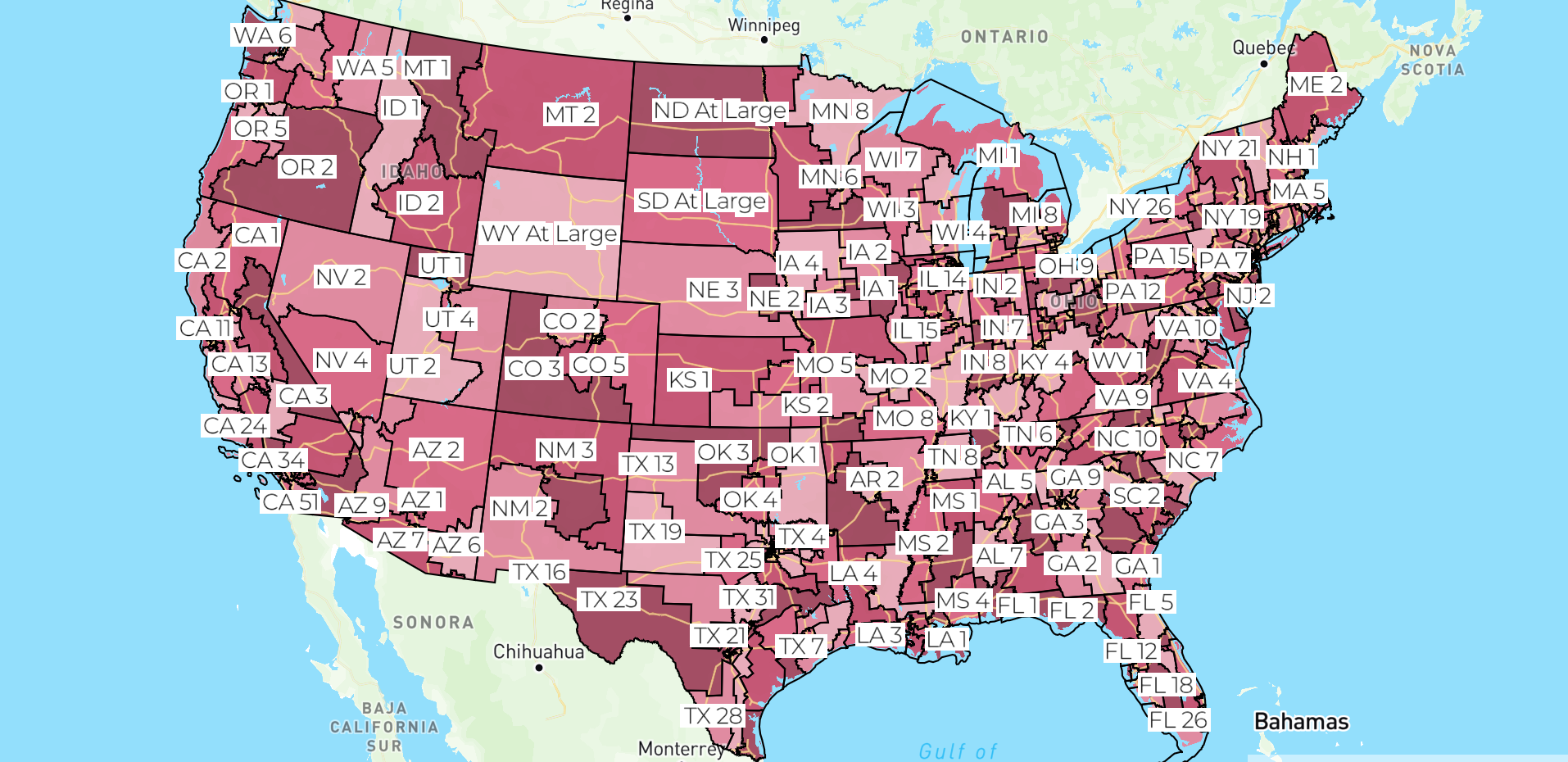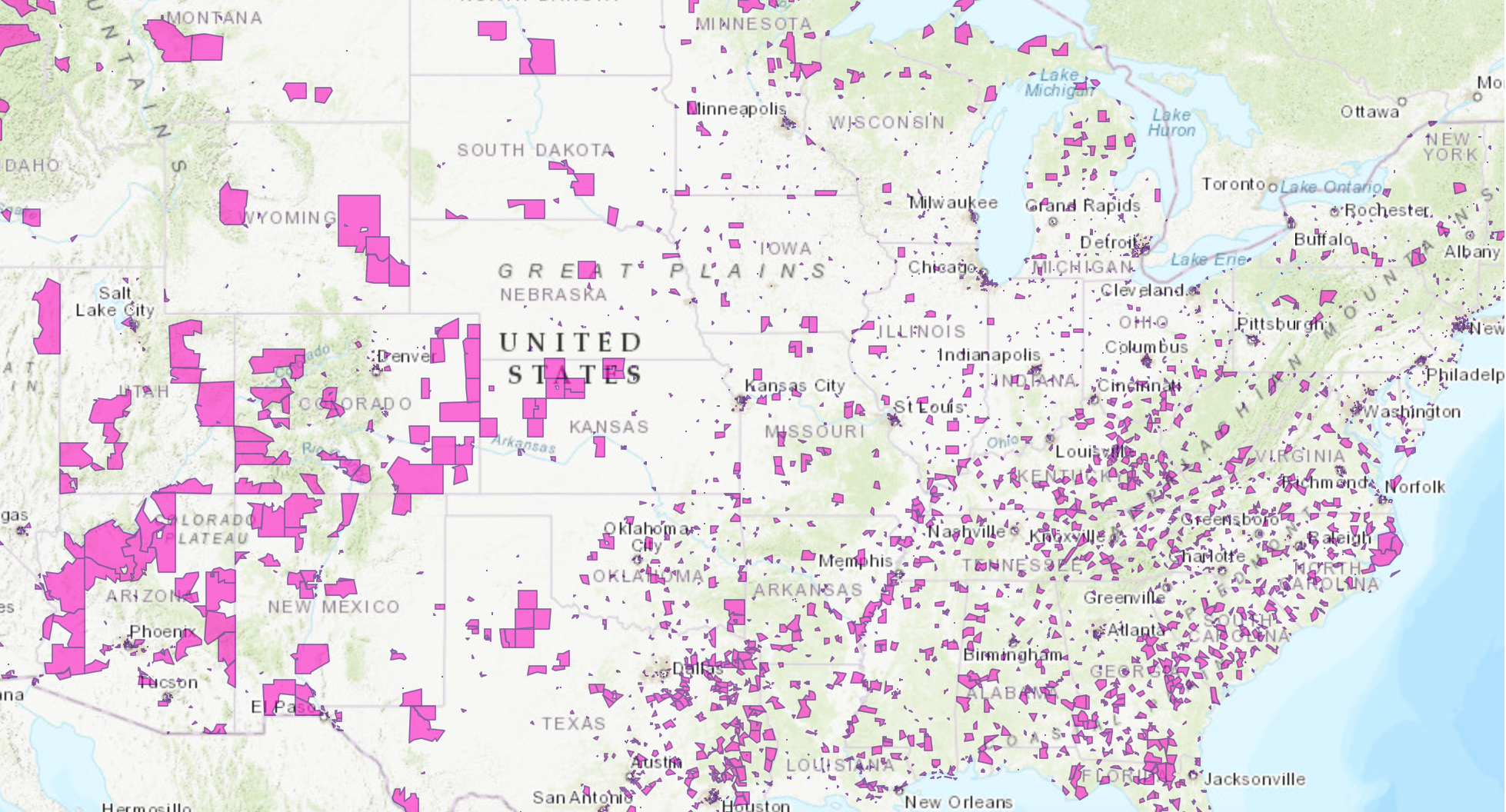
Effective social impact is inherently local
MAPS
MAPS
Community Led Social Impact is fostered on a local level, leveraging the direct input, lived experience, and expertise of the local community to deliver equitable outcomes.
Maps offer a visual and spatial tool in which to overlay the historical, political, environmental, and social determinants of current economic and environmental inequities.
With maps we are able to see the intersectional realities and opportunities for local climate action.
TNC’s Site Renewables Right Tool
Site Renewables Right is an interactive online map from The Nature Conservancy (TNC). It combines detailed data on engineering, land use, and wildlife to pinpoint locations in the central U.S. suitable for rapid renewable energy project development with minimal environmental impact. The goal is to speed up the deployment of clean energy necessary for climate objectives while also protecting vital wildlife habitats and natural areas, creating benefits for both communities and the environment.
Sea Level Rise
Use this interactive map to assess sea level rise simulations as well as the impacts of coastal flooding.
Best and worst states to go solar
Various factors help determine whether a state is a good place for homeowners to go solar with rooftop panels. Low installation costs and high retail energy prices can drive people to look for alternatives, and residents in states with more peak sunlight hours can produce more power with fewer panels. State laws and regulations can also encourage people to go solar or discourage them.
This analysis by Consumer Affairs evaluated data in each of the aforementioned categories and assigned points based on their relative importance to come up with each state’s Solar Score. Along with the 50 states, they included Washington, D.C., in their rankings.
Best states to go solar: (1. Hawaii, 2. Nevada, 3. Delaware, 4. Arizona, 5. California)
Yale Climate Opinion Maps 2023
Public opinion about global warming influences the decision-making process for policies to reduce global warming or prepare for the impacts. However, American opinions differ significantly according to where people live. Therefore we can not rely on just the national average to understand public responses to climate change.
The team of scientists at Yale’s Program for Climate Change Communication has developed this geographic and statistical model to downscale national public opinion results to the state, congressional district, and county levels. This now allows us to estimate public opinion across the country, revealing a rich picture of the diversity of Americans’ beliefs, attitudes, and policy support.
Climate Change Costs Map
Millions of homes and properties are at risk in the US due to climate change. Flooding, wildfires, heat, and wind are all climate-related reasons that could cost property owners tens of thousands of dollars. Use this map to estimate how much climate change will cost you, the risks your property is exposed to, and potential solutions to mitigate those risks.
Energy Equity for Renters Policy Tracker
The Energy Equity for Renters Policy Tracker lists which cities, counties, and states have adopted policies and programs to advance both energy efficiency and equity in rental housing as of October 2022. The map captures the following policies:
Adopting a renter right of first refusal on property sale
Creating a rental energy disclosure policy
Promoting existing state and utility efficiency programs to renters and landlords
Adopting a rental energy performance standard and assisting affordable housing providers with compliance
Designing rental efficiency loan and grant programs with affordability covenants
Granting renters the right to make efficiency improvements
Instituting limited-scope rental property retrofit requirements
HOLC Historic Lending Guideline Maps
The Mapping Inequality dataset on PolicyMap comprises of neighborhood risk assessment data for 148 cities across the US. The Federal Home Loan Bank Board (FHLBB), the HOLC’s parent organization, commissioned the City Survey Program in 1935 to collect data on real estate risk levels across 239 cities. As part of the exercise, each neighborhood was evaluated via a network of realtors, lenders, developers, and HOLC staff members, and ultimately assigned a rating or letter grade which signified the neighborhood’s investment prospects for lending. The rating was primarily a function of neighborhood racial and ethnic makeup, housing conditions, and access to public facilities, among other factors.
Solar in Your Community Challenge Team Map
The SunShot Prize: Solar in Your Community Challenge is a prize competition that aims to expand solar electricity access to all Americans, especially underserved segments such as low- and moderate-income (LMI) households, state, local, and tribal governments, and nonprofit organizations. In order to make solar more accessible and inclusive for every American, the challenge works to spur the development of new and innovative financial and business models that serve non-rooftop solar users such as community solar.
Materiality Map
SASB Standards guide the disclosure of financially material sustainability information by companies to their investors. Available for 77 industries, the Standards identify the subset of environmental, social, and governance issues most relevant to financial performance in each industry.
Novogradac Opportunity Zones Mapping Tool
Designated opportunity zones displayed in the Novogradac Opportunity Zones Mapping tool are those that were nominated by those chief executive officers, and have been certified and designated by the Treasury Department. In addition, every low-income census tract in Puerto Rico was designated as an OZ in 2018 budget legislation. Once an OZ is designated, it remains a qualified OZ for a period of 10 years from the date of designation.
Mapping U.S. Energy Communities
Exploring which US counties are potentially vulnerable to a transition away from fossil fuels.
Sundown Town Map
Sundown towns, also known as sunset towns, gray towns, or sundowner towns, are all-white municipalities or neighborhoods in the United States that practice a form of racial segregation by excluding non-whites via some combination of discriminatory local laws, intimidation or violence. The term came from signs posted that "colored people" had to leave town by sundown.
Rural City Map
The Infrastructure Investment and Jobs Act is the largest investment in climate resilience in U.S. history. The $1.2 trillion in funding will create transformative opportunities for local governments that own and maintain most of the nation’s infrastructure, but first state and federal agencies must ensure the resources get to the places that need it the most. To help identify communities that need support but may lack staff and expertise to compete for federal funding, we have created a first-of-its-kind Rural Capacity Map.
The Social Vulnerability Index (SVI) Interacitve Map
ATSDR is directed by congressional mandate to perform specific functions concerning the effect on public health of hazardous substances in the environment. These functions include public health assessments of waste sites, health consultations concerning specific hazardous substances, health surveillance and registries, response to emergency releases of hazardous substances, applied research in support of public health assessments, information development and dissemination, and education and training concerning hazardous substances.
Congressional Districts Map
GovTrack.us’s mission is to help Americans participate in their government. a. We make information about the United States Congress accessible, understandable, and actionable for public use. b. We do this by putting the information in context, tracking new developments on issues our users care about, and helping our users take action to make a meaningful difference. c. We actively seek out any information relevant to our mission and new ways to analyze and explain that information.
Island & Costal Communities
Because of their low-lying ocean-fronted borders, relatively small land masses, and exposure to extreme weather and climate variability, island nations are especially vulnerable to the effects of global warming and climate change. As sea levels continue to rise, island peoples and their cultures are being threatened. There are small and low populated islands without adequate resources to protect the island and its human and natural resources. With the risks to human health, livelihoods, and physical space in which to live, the pressure to leave the island is often barred by the inability to access the resources needed to relocate.
Endangered Species
Americans shouldn’t have to choose between reducing our greenhouse gas pollution and protecting our rich wildlife legacy from energy development. We can, and must, do both. Defenders of Wildlife is excited to be working with our conservation partners in leading the effort to encourage wildlife-friendly renewable energy development.
National Historic Register
NIHHIS is an integrated system that builds understanding of the problem of extreme heat, defines demand for climate services that enhance societal resilience, develops science-based products and services from a sustained climate science research program, and improves capacity, communication, and societal understanding of the problem in order to reduce morbidity and mortality due to extreme heat. NIHHIS is a jointly developed system by the Centers for Disease Control and Prevention (CDC) and the National Oceanic and Atmospheric Administration.
Opportunity Zone
Opportunity Zones are an economic development tool that allows people to invest in distressed areas in the United States. Their purpose is to spur economic growth and job creation in low-income communities while providing tax benefits to investors. Opportunity Zones were created under the Tax Cuts and Jobs Act of 2017. Thousands of low-income communities in all 50 states, the District of Columbia and five U.S. territories are designated as Qualified Opportunity Zones.
Heat Island
NIHHIS is an integrated system that builds understanding of the problem of extreme heat, defines demand for climate services that enhance societal resilience, develops science-based products and services from a sustained climate science research program, and improves capacity, communication, and societal understanding of the problem in order to reduce morbidity and mortality due to extreme heat. NIHHIS is a jointly developed system by the Centers for Disease Control and Prevention (CDC) and the National Oceanic and Atmospheric Administration.
